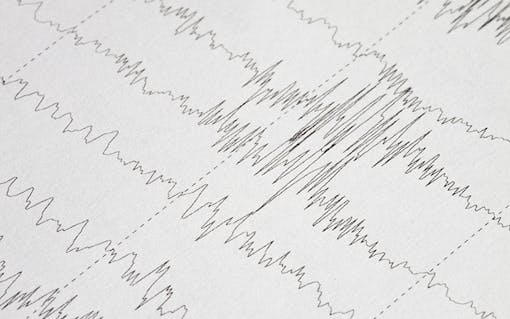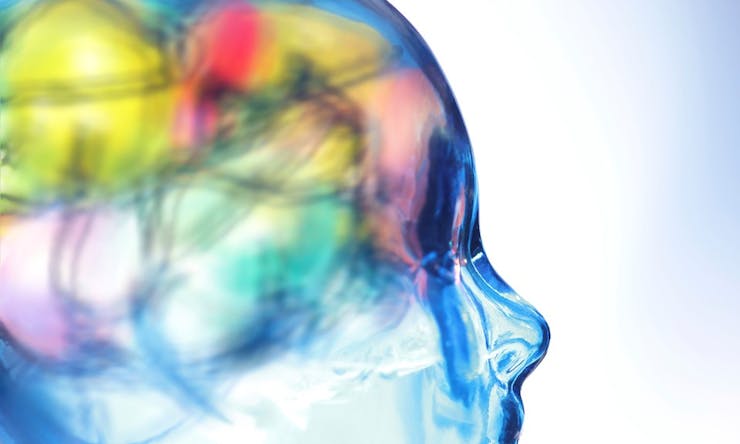The relationship between cannabis and the brain is a meaty subject. Identifying the various ways cannabis affects the brain is complicated, and we’ve only just begun to unravel many of the mysteries. Most perplexingly, there’s a lot of seemingly contradictory evidence out there.
On the one hand, we’re inundated with messages that cannabis impairs a user’s cognitive function — particularly short-term memory. On the other hand, we hear cannabis can act as a neuroprotectant, perhaps even preventing the onset of neurodegenerative diseases like Alzheimer’s.
How can this be? Cannabis is a diverse, complex plant comprised of hundreds of chemicals. And, two of its most prominent constituents — THC and CBD — affect us in significantly different ways. But, first, let’s start with an explanation of the endocannabinoid system, or ECS.
What is the Endocannabinoid System and Why is It Important?

The ECS, also known as “the body’s own cannabinoid system,” is a group of cannabinoid receptors located in the brain and throughout the central nervous system (CNS) and peripheral nervous system (PNS). It plays a vital role in the regulation of mood, memory, physiology, pain sensation, appetite, and overall health. While the ECS performs numerous tasks, its primary goal is homeostasis, or the maintenance of a stable and healthy internal environment.
The discovery of the endocannabinoid system and associated receptors has played a significant role not just in our understanding of cannabis, but of human biology, health, and disease.
Scientists have identified the two primary cannabinoid receptors, CB1 and CB2:
- CB1 receptors can be found primarily in the brain and nervous system, but are also found in other organs and connective tissues. CB1 is the main receptor for THC, a phytocannabinoid (phyto meaning, “of the plant”); and, its twin, anandamide, one of the body’s naturally occurring cannabinoids which THC mirrors. The activation of CB1 receptors by THC is responsible for cannabis’ psychoactive effects.
- CB2 receptors, found predominantly in the immune system and associated structures, are responsible for modulating cannabis’s anti-inflammatory effects. Inflammation is thought to be a significant factor in many diseases, and CB2 acts as an immune response.
Cannabis contains at least 85 cannabinoids, the chemical compounds that interact with the brain’s receptors. The two cannabinoids people are most familiar with include THC and CBD.
Shop highly rated dispensaries near you
Showing you dispensaries nearTHC, which is responsible for most of cannabis’ psychoactive effects, affects the brain by activating cannabinoid receptors, namely CB1. THC promotes creativity, amplifies your thoughts, and keeps you focused…until stimuli distracts you to a tangential thought (good for philosophical conversations, but for studying, not so much!).
Surprisingly, THC’s (largely) non-intoxicating sibling and the second most studied constituent in cannabis, CBD, shows little affinity to bind to either CB1 or CB2; instead, CBD seems to indirectly stimulate cannabinoid signaling by suppressing the enzyme that breaks down anandamide. This partly explains why CBD appears to counteract some of the effects of THC, and why higher CBD concentrations result in fewer intoxicating effects. Like THC, CBD also plays an important role in appetite, the immune system, and pain management.
The Biphasic Effect: Why Proper THC Dosage is Important

The effects of cannabis vary by individual and are highly dependent on dosing and form of preparation (e.g., vapes, edibles, etc.). It’s important to note that like many chemicals, cannabinoids — THC in particular — have a biphasic effect, meaning low and high doses can have opposite effects in users. This is partly why many people may feel relaxed with low doses of cannabis and paranoid under high doses. Most medical marijuana practitioners advise patients to start with a low dosage and gradually increase dosage as the patient determines how their body reacts. This process is known as “self-titration.”
Another way to think of the biphasic effect is as a therapeutic window. Cannabis has a narrow therapeutic range, meaning the difference between the optimal dosage that elicits the effect one desires versus a dosage that creates adverse effects can be subtle. Take chronic pain as an example: most studies of cannabis and chronic pain report that patients find relief in low to moderate doses of cannabis, but may find pain exacerbated when the dosage is too high.
Further complicating the issue is that THC and CBD levels — as well as THC:CBD ratios — can vary dramatically from strain to strain, so it’s important for people to be conscious of these levels as they find the most appropriate dosage to treat their condition.
The same goes for lifestyle users who may find they have a preference for a particular strain. One strain may make them feel overly drowsy or anxious, while another may make them feel relaxed and happy. Everyone’s body chemistry is different, so how one responds to cannabis can vary dramatically.
Optimal Dosing (Low to Moderate Doses):
- Elevated mood, feelings of euphoria, and relaxation
- Sleepiness (although higher CBD concentrations can contradict this effect)
- Increase in creativity
- Blocking the detection of pain
- Alleviating nausea
- Appetite stimulation
Suboptimal Dosing (High Doses):
- Hallucinations varying from mild to moderate
- Paranoia
- Anxiety
- Disorientation
- Heightened pain sensitivity
Circling back around to the question posed at the beginning of this article, why is there so much seemingly contradictory or paradoxical evidence (e.g., cannabinoids “protect” or “impair” cognitive function) on how marijuana affects the brain?
Dr. Mike Hart, head physician at Marijuana for Trauma offers an explanation:
“Frustratingly, we have very few high-quality human studies that examine the potential long-term benefits or negative effects of cannabis consumption on the brain. But, just like cannabis has biphasic acute effects, the same may hold true in long-term usage,” says Dr. Hart. “Too much, too often, over a long period of time, could cause negative effects like diminished verbal memory recall; while the right amount and right frequency could elicit the benefits we’ve found in early studies on animal models, such as neuroprotection and the slowing or prevention of neurodegenerative disease.”





